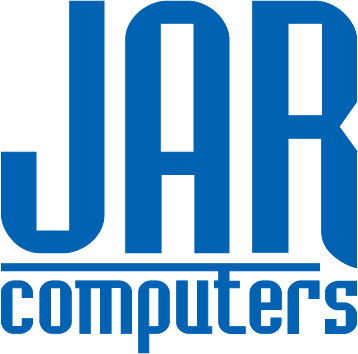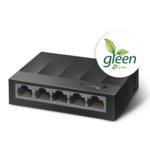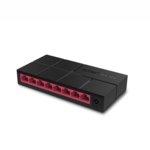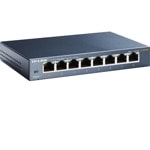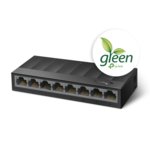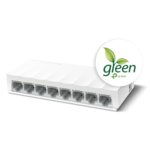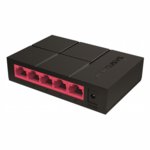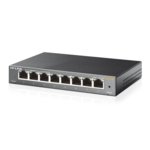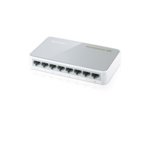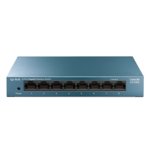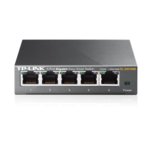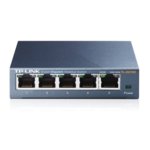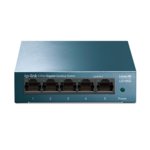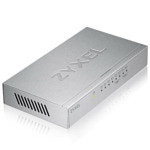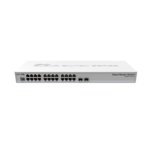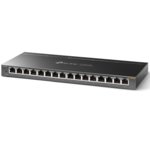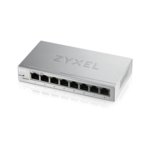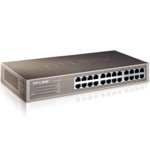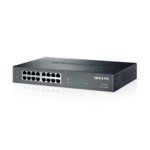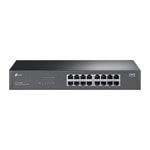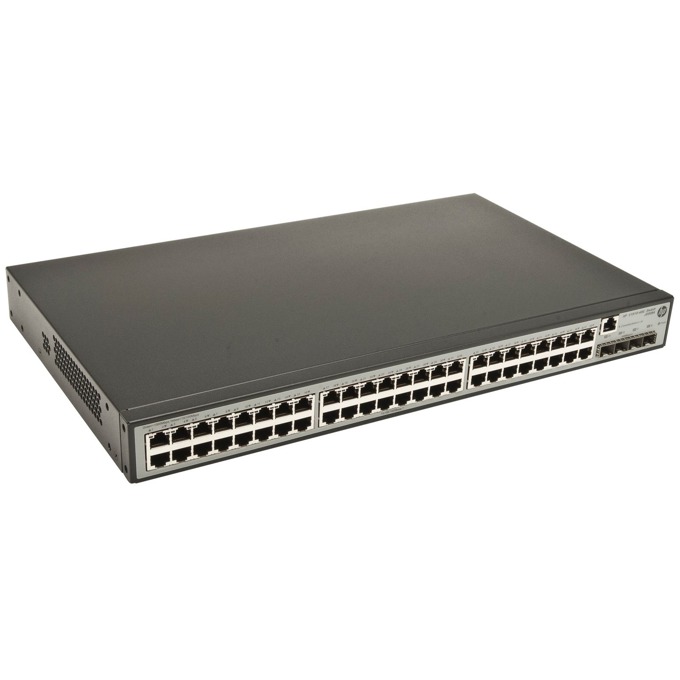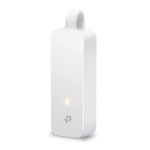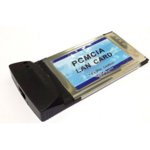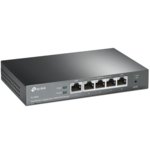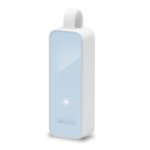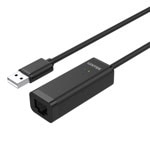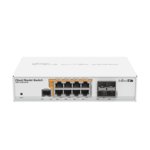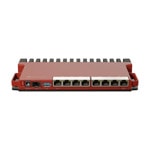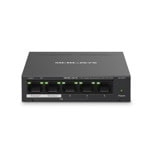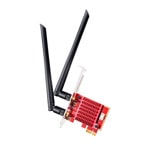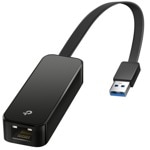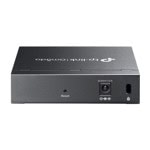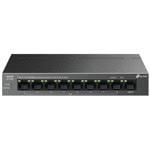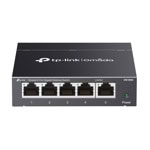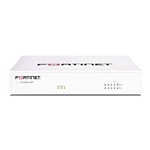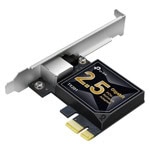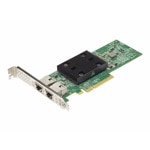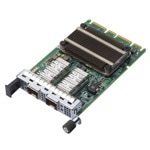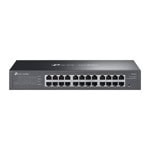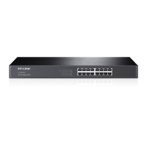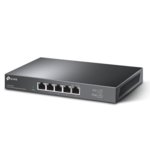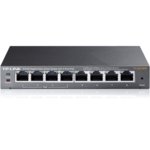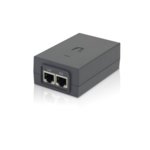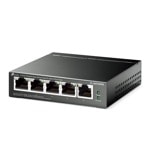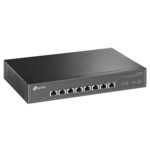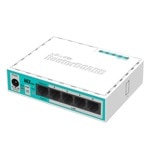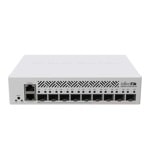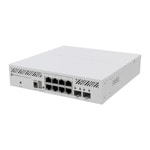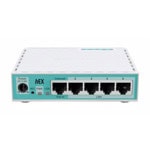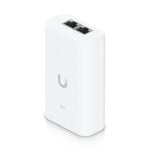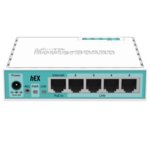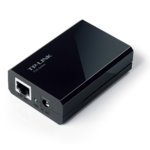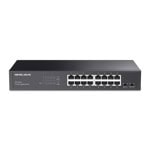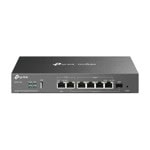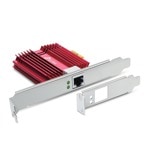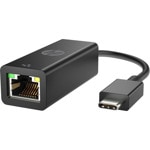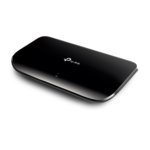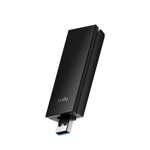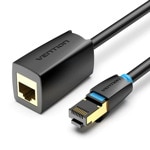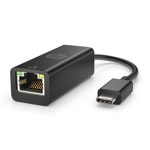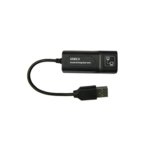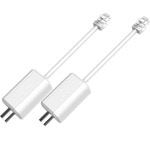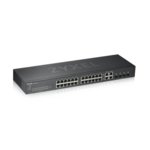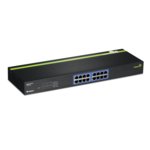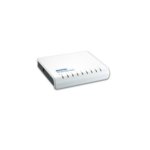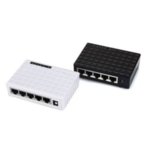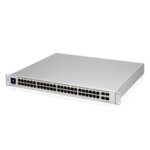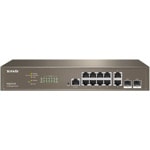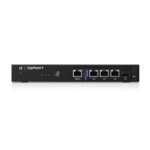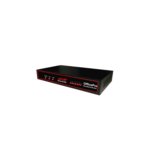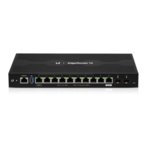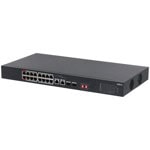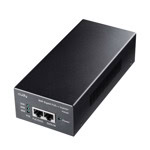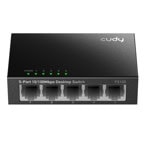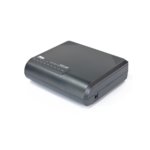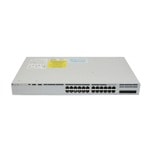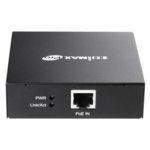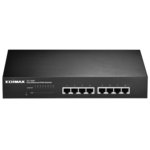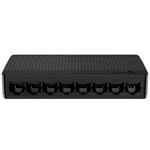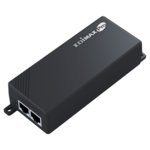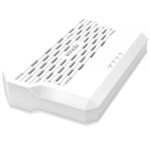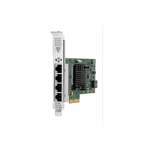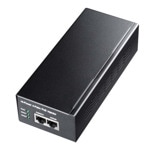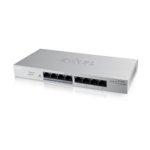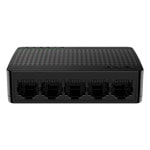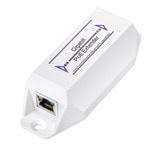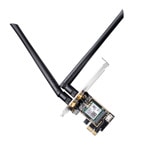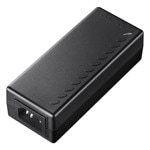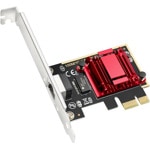Simple Web management: allows for easy management of the switch- even by nontechnical users- through an intuitive Web GUI; http and secure http (https) is supported
Single IP management: enables management of up to four HP 1910 devices using a single Web interface; simplifies management of multiple devices
Secure Web GUI: provides a secure, easy-to-use graphical interface for configuring the module via HTTPS
SNMPv1, v2c, and v3: facilitates management of the switch, as the device can be discovered and monitored from an SNMP management station
Complete session logging: provides detailed information for problem identification and resolution
Quality of Service (QoS)
Broadcast control: allows limitation of broadcast traffic rate to cut down on unwanted network broadcast traffic
Rate limiting: sets per-port ingress enforced maximums and per-port, per-queue minimums
Traffic prioritization: provides time-sensitive packets (like VoIP and video) with priority over other traffic based on DSCP or IEEE 802.1p classification; packets are mapped to four hardware queues for more effective throughput
Connectivity
IPv6: IPv6 host: enables switches to be managed and deployed at the IPv6 network's edge. IPv6 routing: supports IPv6 static routes. MLD snooping: forwards IPv6 multicast traffic to the appropriate interface, preventing traffic flooding. IPv6 ACL/QoS: supports ACL and QoS for IPv6 network traffic.
Auto-MDI/MDIX: adjusts automatically for straight-through or crossover cables on all 10/100/1000 ports
IEEE 802.3X flow control: provides a flow throttling mechanism propagated through the network to prevent packet loss at a congested node
IEEE 802.3af Power over Ethernet (PoE) ready: provides up to 15.4 W per port to power standards-compliant IP phones, wireless LAN access points, Web cameras, and more (all PoE models)
IEEE 802.3at Power over Ethernet (PoE+): provides up to 30 W per port which allows support of the latest PoE+-capable devices such as IP phones, wireless access points, and security cameras, as well as any IEEE 802.3af-compliant end device; eliminates the cost of additional electrical cabling and circuits that would otherwise be necessary in IP phone and WLAN deployments. (Note: applies to all PoE models, except the two 24G-PoE models which support a pre-standard implementation of PoE+)
Security
Advanced access control lists (ACLs): enables network traffic filtering and enhances network control using MAC- and IP-based ACLs; time-based ACLs allow for greater flexibility with managing network access
Secure Sockets Layer (SSL): encrypts all HTTP traffic, allowing secure access to the browser-based management GUI in the switch
IEEE 802.1X and RADIUS network logins: controls port-based access for authentication and accountability
Automatic VLAN assignment: assigns users automatically to the appropriate VLAN based on their identity, location and time of day
STP BPDU port protection: blocks Bridge Protocol Data Units (BPDUs) on ports that do not require BPDUs, preventing forged BPDU attacks
Performance
Half-/full-duplex auto-negotiating capability on every port: doubles the throughput of every port
Selectable queue configurations: allows for increased performance by selecting the number of queues and associated memory buffering that best meet the requirements of the network applications
IGMP snooping: improves network performance through multicast filtering, instead of flooding traffic to all ports
Fiber uplink: provides greater distance connectivity using Gigabit fiber uplinks
Layer 2 switching
VLAN support and tagging: supports IEEE 802.1Q (4,094 VLAN IDs) and 256 VLANs simultaneously
Spanning Tree Protocol (STP): supports standard IEEE 802.1D STP, IEEE 802.1w Rapid Spanning Tree Protocol (RSTP) for faster convergence, and IEEE 802.1s Multiple Spanning Tree Protocol (MSTP)
BPDU filtering: drops BPDU packets when STP is enabled globally but disabled on a specific port
Jumbo frame support: supports up to 10 kilobyte frame size to improve the performance oflarge data transfers
Layer 3 services
Address Resolution Protocol (ARP): determines the MAC address of another IP host in the same subnet; supports static ARPs; gratuitous ARP allows detection of duplicate IP addresses; proxy ARP allows normal ARP operation between subnets or when subnets are separated by a Layer 2 network
DHCP relay: simplifies management of DHCP addresses in networks with multiple subnets
Latency
100 Mb Latency: < 5 µs
1000 Mb Latency: < 5 µs
Management features
IMC - Intelligent Management Center
limited command-line interface
Web browser
SNMP Manager
IEEE 802.3 Ethernet MI
48x10/100/1000Base-T
Виж още Суич HP
Виж всички Суич в категорията
Single IP management: enables management of up to four HP 1910 devices using a single Web interface; simplifies management of multiple devices
Secure Web GUI: provides a secure, easy-to-use graphical interface for configuring the module via HTTPS
SNMPv1, v2c, and v3: facilitates management of the switch, as the device can be discovered and monitored from an SNMP management station
Complete session logging: provides detailed information for problem identification and resolution
Quality of Service (QoS)
Broadcast control: allows limitation of broadcast traffic rate to cut down on unwanted network broadcast traffic
Rate limiting: sets per-port ingress enforced maximums and per-port, per-queue minimums
Traffic prioritization: provides time-sensitive packets (like VoIP and video) with priority over other traffic based on DSCP or IEEE 802.1p classification; packets are mapped to four hardware queues for more effective throughput
Connectivity
IPv6: IPv6 host: enables switches to be managed and deployed at the IPv6 network's edge. IPv6 routing: supports IPv6 static routes. MLD snooping: forwards IPv6 multicast traffic to the appropriate interface, preventing traffic flooding. IPv6 ACL/QoS: supports ACL and QoS for IPv6 network traffic.
Auto-MDI/MDIX: adjusts automatically for straight-through or crossover cables on all 10/100/1000 ports
IEEE 802.3X flow control: provides a flow throttling mechanism propagated through the network to prevent packet loss at a congested node
IEEE 802.3af Power over Ethernet (PoE) ready: provides up to 15.4 W per port to power standards-compliant IP phones, wireless LAN access points, Web cameras, and more (all PoE models)
IEEE 802.3at Power over Ethernet (PoE+): provides up to 30 W per port which allows support of the latest PoE+-capable devices such as IP phones, wireless access points, and security cameras, as well as any IEEE 802.3af-compliant end device; eliminates the cost of additional electrical cabling and circuits that would otherwise be necessary in IP phone and WLAN deployments. (Note: applies to all PoE models, except the two 24G-PoE models which support a pre-standard implementation of PoE+)
Security
Advanced access control lists (ACLs): enables network traffic filtering and enhances network control using MAC- and IP-based ACLs; time-based ACLs allow for greater flexibility with managing network access
Secure Sockets Layer (SSL): encrypts all HTTP traffic, allowing secure access to the browser-based management GUI in the switch
IEEE 802.1X and RADIUS network logins: controls port-based access for authentication and accountability
Automatic VLAN assignment: assigns users automatically to the appropriate VLAN based on their identity, location and time of day
STP BPDU port protection: blocks Bridge Protocol Data Units (BPDUs) on ports that do not require BPDUs, preventing forged BPDU attacks
Performance
Half-/full-duplex auto-negotiating capability on every port: doubles the throughput of every port
Selectable queue configurations: allows for increased performance by selecting the number of queues and associated memory buffering that best meet the requirements of the network applications
IGMP snooping: improves network performance through multicast filtering, instead of flooding traffic to all ports
Fiber uplink: provides greater distance connectivity using Gigabit fiber uplinks
Layer 2 switching
VLAN support and tagging: supports IEEE 802.1Q (4,094 VLAN IDs) and 256 VLANs simultaneously
Spanning Tree Protocol (STP): supports standard IEEE 802.1D STP, IEEE 802.1w Rapid Spanning Tree Protocol (RSTP) for faster convergence, and IEEE 802.1s Multiple Spanning Tree Protocol (MSTP)
BPDU filtering: drops BPDU packets when STP is enabled globally but disabled on a specific port
Jumbo frame support: supports up to 10 kilobyte frame size to improve the performance oflarge data transfers
Layer 3 services
Address Resolution Protocol (ARP): determines the MAC address of another IP host in the same subnet; supports static ARPs; gratuitous ARP allows detection of duplicate IP addresses; proxy ARP allows normal ARP operation between subnets or when subnets are separated by a Layer 2 network
DHCP relay: simplifies management of DHCP addresses in networks with multiple subnets
Latency
100 Mb Latency: < 5 µs
1000 Mb Latency: < 5 µs
Management features
IMC - Intelligent Management Center
limited command-line interface
Web browser
SNMP Manager
IEEE 802.3 Ethernet MI
48x10/100/1000Base-T
Виж още Суич HP
Виж всички Суич в категорията
Документация
Технически характеристики
| Брой портове: | 48 |
|---|---|
| Максимална скорост: | 1 Gbit/s |
Добави Ревю / Въпрос
Оцени продукта или задай въпрос?
- 5
0 ревюта
- 4
0 ревюта
- 3
0 ревюта
- 2
0 ревюта
- 1
0 ревюта
Свързани продукти
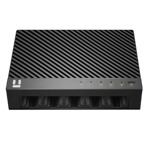
Суич Stonet ST3105C, 100Mbps, 5 порта, 16x 10/100Mbps RJ4511.34 лв
/5.80 €
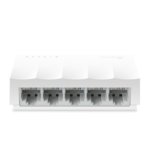
Суич TP-Link LS1005, 100Mbps, 5x 10/100Mbps11.49 лв
/5.88 €
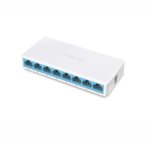
Суич Mercusys MS108, 100Mbps, 8-Port 10/100Mbps Ethernet ports11.88 лв
/6.08 €
